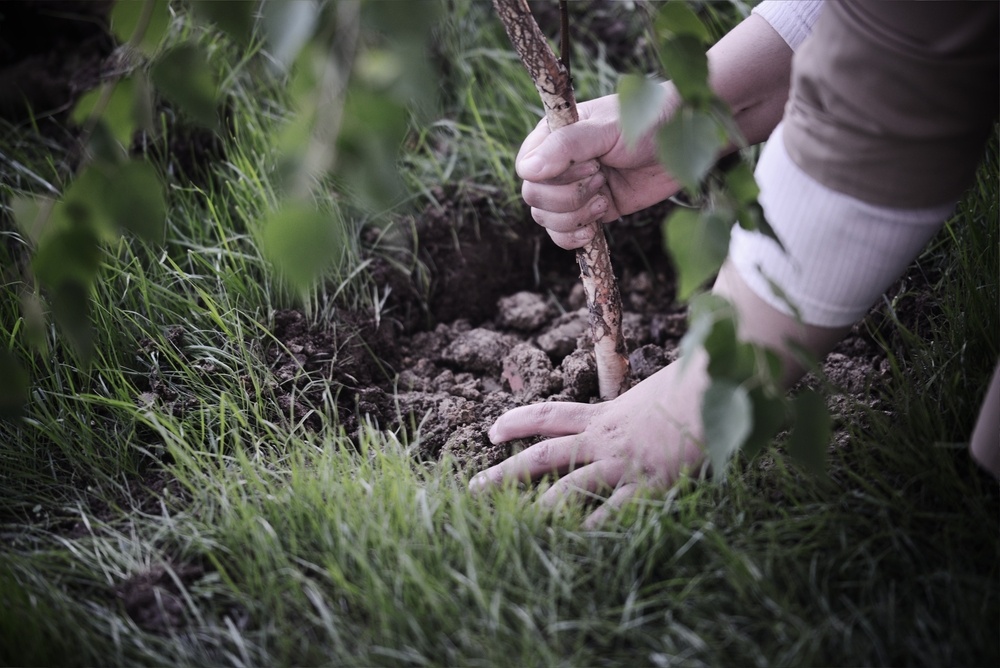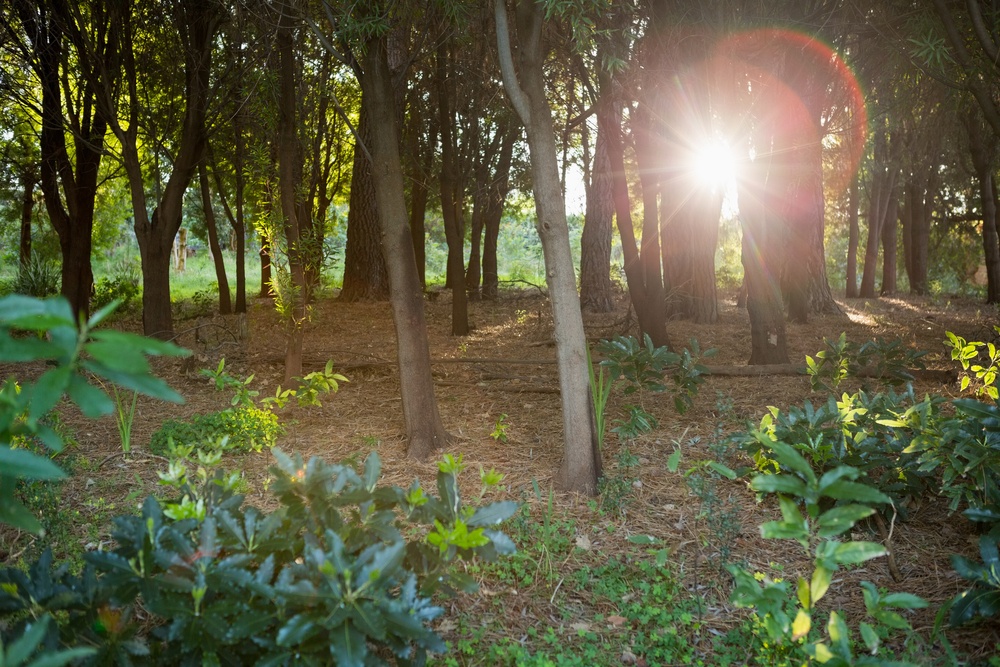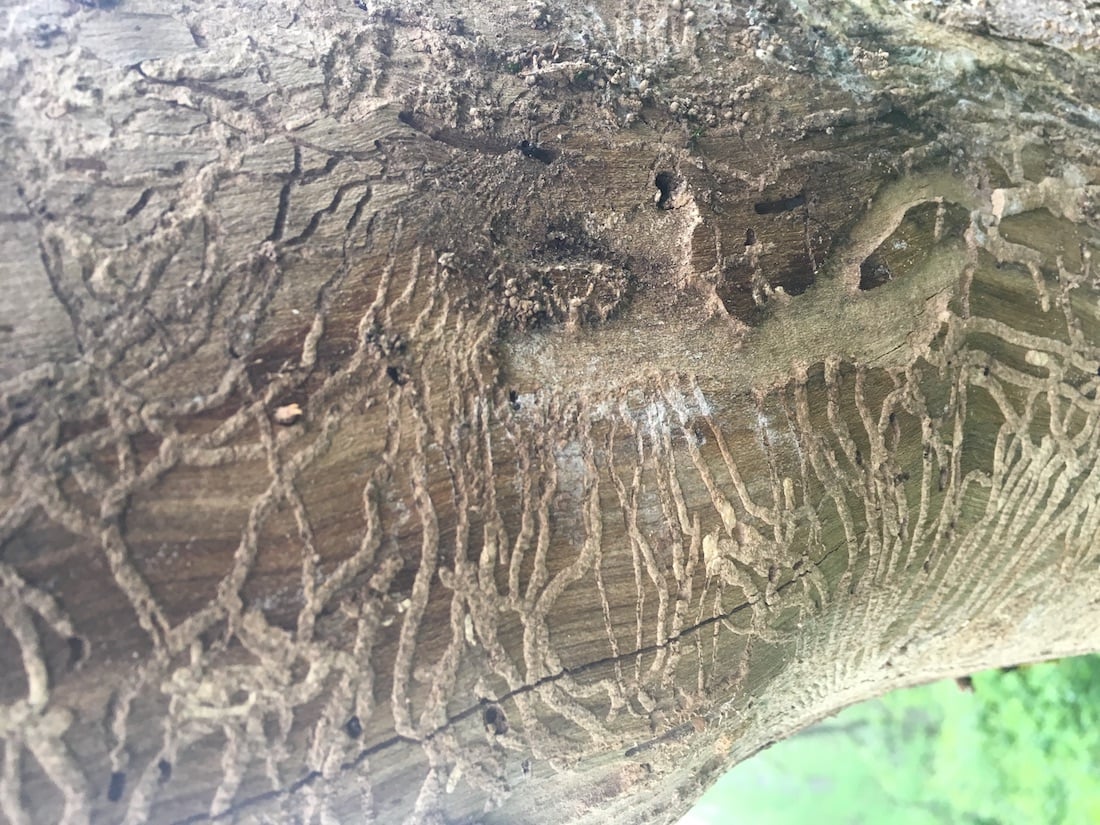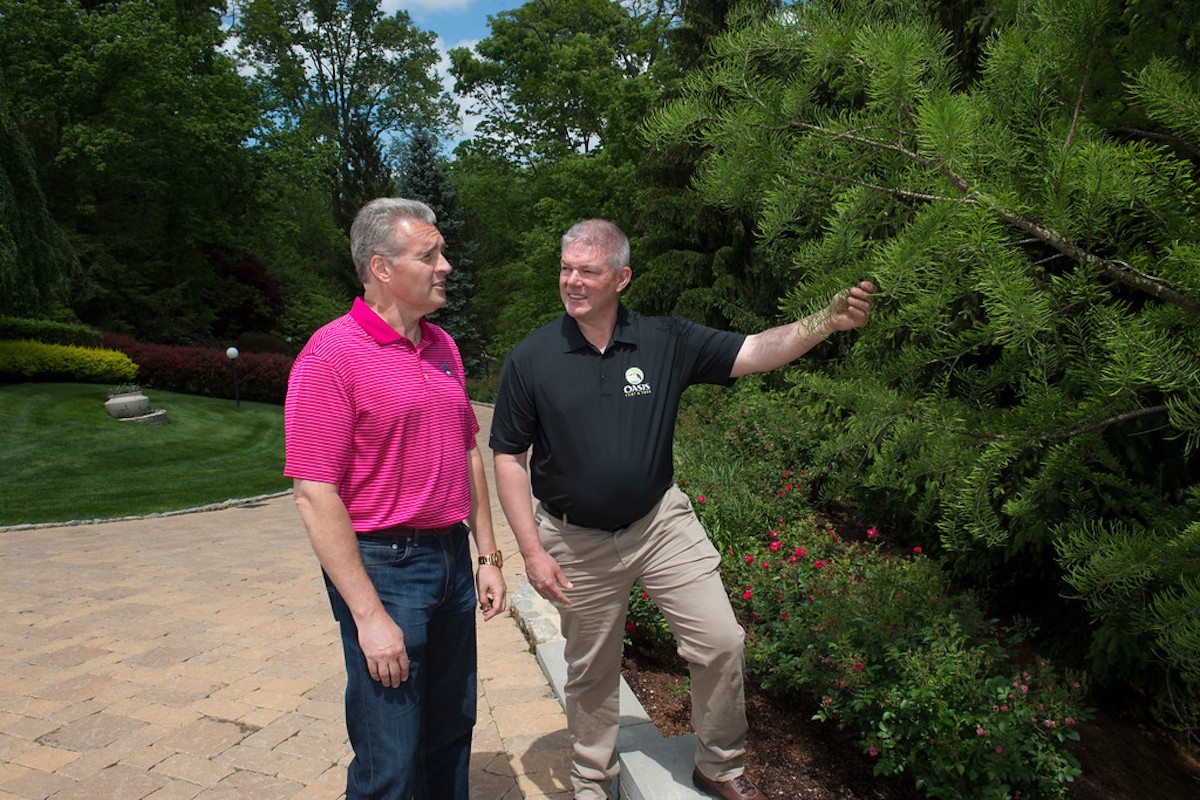Pine trees can be a wonderful addition to your property. They can offer year-round greenery and privacy as well as beautiful aesthetics. A lot of people often refer to all evergreens as “pines,” however, they are only one type of evergreen plants.
Whether you already have pine trees, or you are considering them, you want to be confident that you will not run into common pine tree problems, as it can negatively impact your overall landscape. For instance, if you are using pine trees for privacy, and one fails, then you’ve suddenly got a hole in your privacy screen.
Fortunately, by being educated on some of the most common pine tree problems, you can aim to avoid or remedy them.
1. Poor Pine Tree Selection
If you’re wondering what type of pine tree you should plant, then you need to consider your specific property and its conditions. There are many varieties of pine trees and their needs differ.
One of the most popular backyard pine trees in Ohio is the Eastern White Pine, among a few others that bare close resemblance. Some of these will tolerate certain weather conditions better than others. If you choose a plant species that is not well-suited to your property’s conditions, then it could be the reason why your pine tree is failing.
Of course, it could also be a matter of choosing a poor specimen. If you’ve gotten a pine tree specimen that has defects or is already infested with a tree disease or pest issues, then it’s simply not going to thrive.
2. Improper Planting Practices
Like any tree problem, sometimes pine tree problems come down to the way they were planted. This might mean they weren’t planted deep enough, or maybe they were planted too deep. Planting pine trees too deep is actually one of the biggest mistakes made in tree installation. When planted too deep, tree roots can decline in health because they’re not receiving all the water, oxygen, and nutrients they need.

Similarly, excessive mulch is also a problem for the growth of any tree. One of the most common mistakes made with trees planted too high is to create a “mulch volcano” effect with the surrounding mulch. This poor practice causes the tree to grow girdling roots that circle the tree and strangle it. Plus, during periods of heavy rain, moisture is often soaked up by thick layers of mulch instead of making its way down to the roots where it’s truly needed.
3. The Effects of Pollution on Pine Trees
If your pines are declining in health, there’s a possibility that it’s a pollution problem. For instance, if your trees are close to a roadway or to your driveway, and they’re getting residue from salt applications during wintertime, it could be having a negative effect on their health. They could also be receiving excessive pollution by car exhaust if you live on a busy street where traffic often sits.
Or, if you have a pool that you drain and the water flows down to a row of nearby pine trees, it’s possible your problem could be related to chlorine damage. These factors will differ on a case-by-case basis.
4. Insufficient Sunlight
Pine trees typically require full sun and if you’ve installed them in a shaded area, then your pine tree problems might be a matter of insufficient sunlight. This potential issue all comes down to placement and can be prevented with some forethought.

Prior to planting, you must consider the placement of your pines in relation to other structures or trees which could block their access to sunlight. If your pines are already full grown and you’re realizing they’re not receiving enough light you can see whether trimming your surrounding trees could help make a difference.
5. Pine Tree Watering Concerns
There is not one clear answer for how much to water pine trees. That’s because every property is different when it comes to the soil’s ability to retain moisture as well as drain properly. Pine trees, particularly young ones, may not be receiving enough water in severe drought conditions or in hot weather. This can be especially true when the soil profile is one that drains quickly.
How do you know if your pine is not receiving enough water? The needles of drought-stressed pine trees tend to turn yellow or brown. However, needle changes can be related to other issues as well, including pine tree disease or pest problems. For this reason, it may require a professional opinion to determine exactly what’s going on.
6. Improper Pruning
Pine trees require very minimal pruning. In fact, they are considered low maintenance due to the very fact that their natural shape is quite trim without really needing a lot of help.
The only time you really need to prune a pine tree is if there is a broken limb or some sort of other damage that needs to be corrected. It is best not to prune pine trees in very hot or dry conditions this is the hardest time for the plant to heal.
7. Mowing Damage
You always want to create a buffer between your mower and your trees, and this is no different for a pine tree. Brushing up against the buds of your pine tree branches will ultimately distort them and impair the tree’s natural conical shape.
However, if you can create a buffer with a properly installed mulch ring, then you can avoid brushing against the branches, running into the tree bark, or running over the main roots.
8. Poor Soil Health
Soil is such an essential element to the overall health of your pine tree that it could very easily be the cause of your pine tree problems. Plants need soil that is thriving with active microbiology which helps the plant to digest the nutrients needed for optimal performance. If your soil is in poor health, then it only makes sense that your tree will ultimately be in poor health as well.
Sometimes your pine trees need a little bit of extra help. Fertilizing pine trees with the addition of nutrients will help them to perform their best.
9. Pine Tree Diseases and Pest Problems
Sometimes pine problems are caused by pine tree diseases or pests. Pine Wilt, for instance, is one of the most destructive diseases impacting pine trees and has the ability to completely kill a tree in just a couple of years. This fatal disease is caused by the “pine wilt nematode,” which is a microscopic, worm-like organism that can grow inside of the tree’s water. This pathogen is native to North America.

It’s also possible that your pine tree could have a pest problem such as a borer insect. Among the various borer insects that attack trees, bark beetles are most commonly known to attack pines. Damage from a bark beetle looks like tiny holes in a random pattern. It is distinguishable from the holes made by woodpeckers, which make holes in a straight line. Other pests to be aware of include the zimmerman pine moth, white pine weevil, and pine sawyer beetle.
Keeping your plants healthy with a regular plant health care regimen which includes spraying pine trees to protect them against damaging insects is key. A healthy and thriving tree will also be able to better defend against disease and pests.
Fixing Pine Tree Problems
While any one of these concerns could be the culprit behind your pine tree problems, the truth is, often times it’s more than one factor. Your pine tree might have been able to handle pollution damage if that were the only problem. However, when coupled with a disease problem that had already weakened your pine tree, plus poor soil health that wasn’t allowing it to receive proper nutrients, the pine ultimately failed.

This is why it’s so important to have a professional eye on your property. You don’t have to feel overwhelmed after reading this article and considering all of the different problems a pine tree can have. Instead, you can consult a professional who will know what steps should come next and proactively monitor the health of your pines.
At Oasis Turf & Tree, we can help you deal with soil health, pest problems, and disease concerns. Even if your tree is experiencing another issue, such as lack of water, our technicians are trained to know what to look for and to advise you how to proceed. By implementing a plant health care program that improves the overall health of your trees and shrubs, you’re also setting them up to naturally defend against environmental stressors they may face. If you want to give your pine trees the best chance at success, then getting them on a regular regimen is key.
If you want to find out more about tree and shrub health care for your Cincinnati, Dayton, OH, or Northern Kentucky home, call us today at 513-697-9090 to get your quote, let us help you choose a stand-alone program or bundle it with other services, and then sit back and relax knowing your pine trees and other ornamental plants are in good hands.
Image Sources: pine needles
